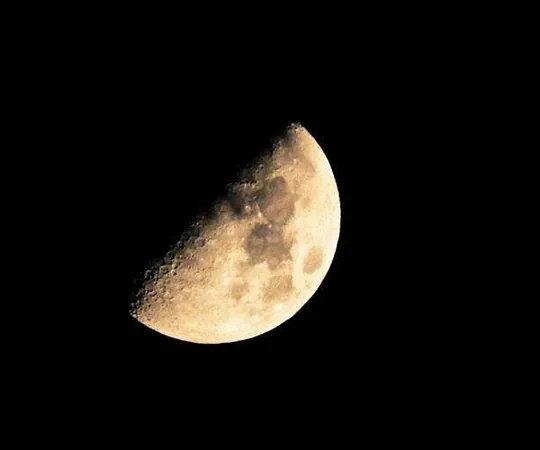
NASA Harnesses Moonlight to Revolutionize Satellite Earth Monitoring
2025-04-13
Author: Benjamin
NASA's Nighttime Moonlight Mission Takes Flight
In a groundbreaking expedition in March 2025, NASA's ER-2 aircraft soared to remarkable heights beneath a waxing moon, transforming into a one-of-a-kind lunar observatory. From its perch at NASA's Armstrong Flight Research Center in California, this high-flying mission was part of the Airborne Lunar Spectral Irradiance (air-LUSI) project.
Unlocking the Secrets of the Moon
Equipped with a state-of-the-art spectroradiometer, the air-LUSI team captured moonlight across various wavelengths, turning the Moon into an extraordinary reference point for satellite calibration. 'The Moon is the perfect benchmark for ensuring satellites accurately measure Earth's changes,' explained Kevin Turpie, the principal investigator. Its consistent brightness allows for precise tracking of weather, ecosystems, and oceans.
High Above, Clarity Reigns
Flying at an altitude of nearly 70,000 feet, the ER-2 ascended above 95% of the Earth's atmosphere, enabling remarkably clear measurements. This elevation minimized atmospheric interference, allowing data collection of unparalleled quality. "These are the most accurate measurements of the Moon ever recorded," noted Kelsey Bisson, a NASA program scientist, highlighting the potential for significant advancements in Earth observation.
Cutting Costs While Boosting Quality
Thanks to air-LUSI, satellite calibration can become more efficient, reducing the reliance on expensive onboard references. This innovation not only enhances data quality but also opens doors to lower operational costs for missions.
A Collaborative Triumph
This ambitious project is a collaboration among NASA, the National Institute of Standards and Technology (NIST), the U.S. Geological Survey, the University of Maryland Baltimore County, and McMaster University in Canada. McMaster played a pivotal role, developing essential hardware like the Autonomous Robotic Telescope Mount Instrument System and the innovative High-Altitude Aircraft Mounted Robotic (HAAMR) telescope mount.
Engineering Excellence Takes Flight
The successful deployment of the HAAMR system marks a new milestone in airborne lunar observation. Andrew Gadsden, an associate professor at McMaster, emphasized the importance of this American-Canadian collaboration: "This project exemplifies exciting engineering and scientific teamwork." With these cutting-edge measurements of lunar light, the future of Earth observation systems looks brighter than ever.









 Brasil (PT)
Brasil (PT)
 Canada (EN)
Canada (EN)
 Chile (ES)
Chile (ES)
 Česko (CS)
Česko (CS)
 대한민국 (KO)
대한민국 (KO)
 España (ES)
España (ES)
 France (FR)
France (FR)
 Hong Kong (EN)
Hong Kong (EN)
 Italia (IT)
Italia (IT)
 日本 (JA)
日本 (JA)
 Magyarország (HU)
Magyarország (HU)
 Norge (NO)
Norge (NO)
 Polska (PL)
Polska (PL)
 Schweiz (DE)
Schweiz (DE)
 Singapore (EN)
Singapore (EN)
 Sverige (SV)
Sverige (SV)
 Suomi (FI)
Suomi (FI)
 Türkiye (TR)
Türkiye (TR)
 الإمارات العربية المتحدة (AR)
الإمارات العربية المتحدة (AR)